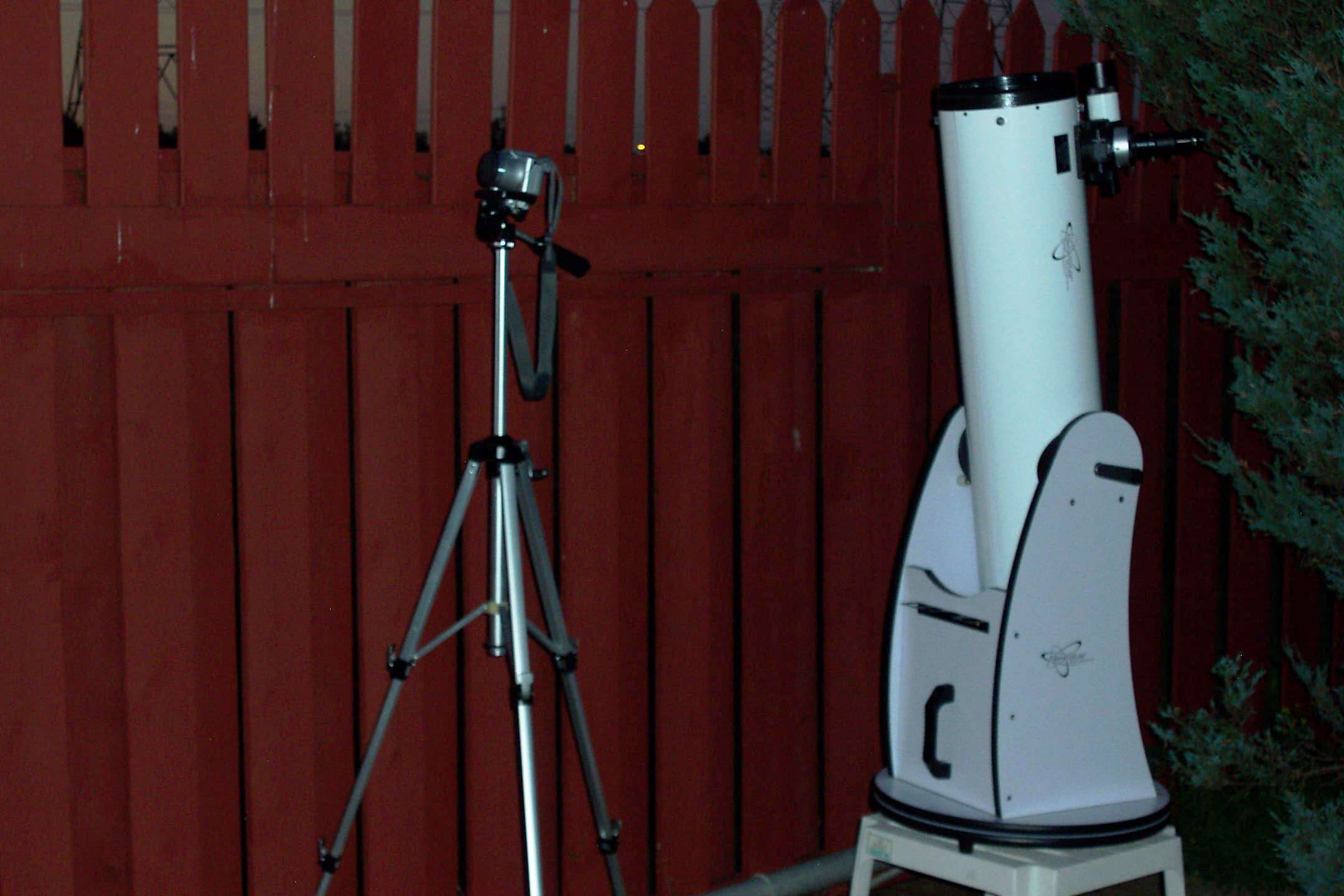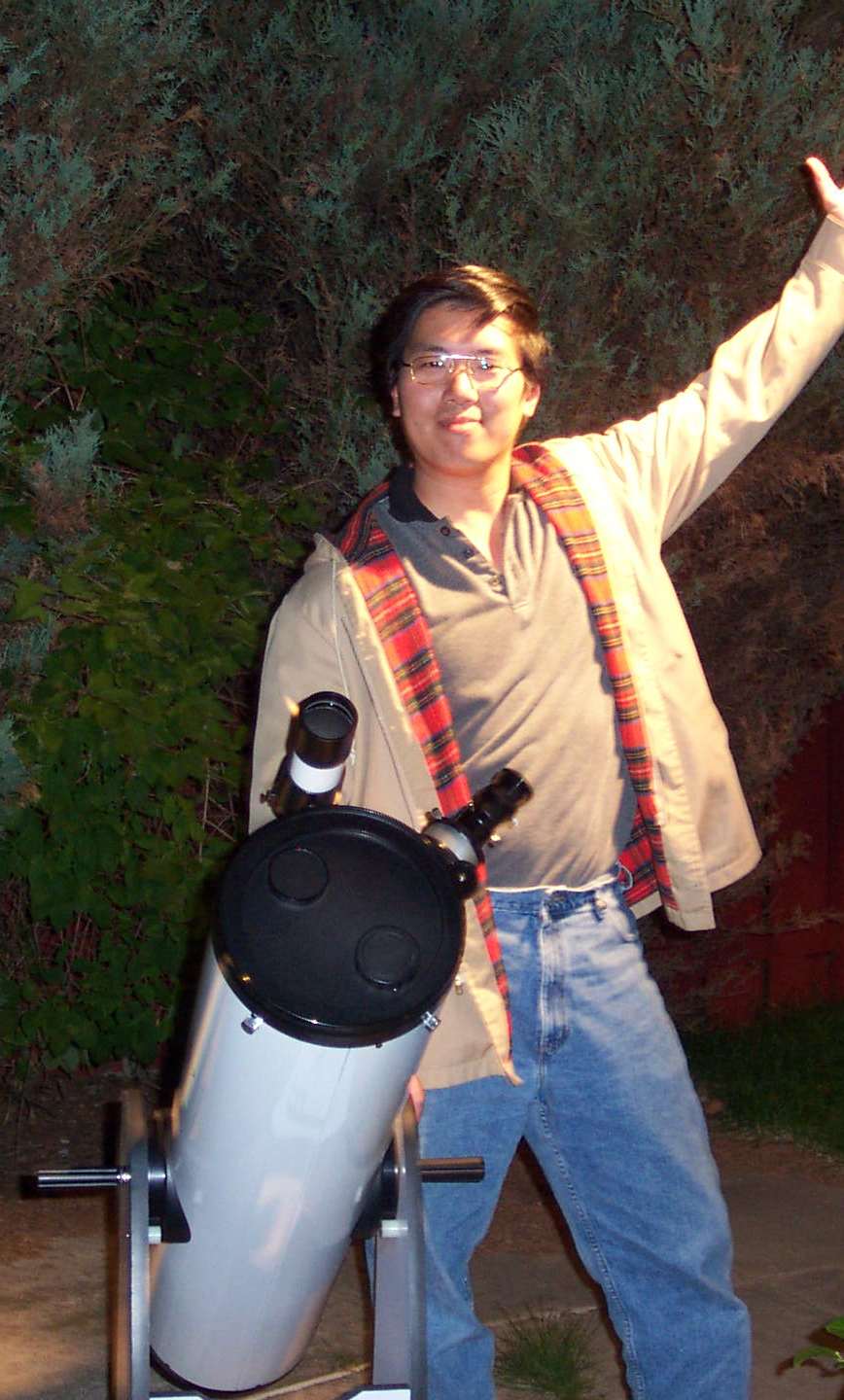Backyard Astronomy
by Richard Ong
I don’t use a smaller, motorized telescope with a tracking console attached that you can program. Most of the professional-looking shots taken by backyard astronomers use those so that they won’t have to suffer through the shaking effect of manually steadying the barrel of a heavy telescope while digitally magnifying the image of the target using the camera’s LCD screen.

|
What’s amazing is that the camera adapter (as simple threaded tube and eyepiece cowl) cost me about almost $200 through a special order in the States. The telescope was $400 (without the eyepiece and Barlow lens). Below are the technical specs of the rig and digital camera used for readers of the site who wanted to get an idea on how to get started on backyard night-sky photography:
The Telescope:
- 8-inch reflecting mirror Dobsonian type; 25-mm eyepiece
- 2X Barlow lens to double the mangnifying power (purchased at Efton Science in Toronto)
- Magnification = ( focal length of the telescope body / focal length of the eyepiece used ) X the magnification of the Barlow = ( 1200 mm / 25 mm ) X 2 = 96 X Magnification Power
- Camera Used: Kodak DX3600 Easyshare (3.1 megapixels) with 6x digital zoom.

|
At the base of the barrel is the 8-inch mirror reflecting the field of stars towards a small mirror and prism inside the tube which relay the image through the Barlow lens and the eyepiece for focusing. A small finder scope attached to the side of the barrel allows you to orient the position of your target. This is especially useful once the digital camera’s LCD screen becomes your only window to what the telescope is trained at.
Once the target has been acquired, I further fiddle around with the digital camera’s sensitivity settings, sharpness, etc.. to compensate for the quality of the light streaming in. The digital zoom is helpful, but I personally would’ve preferred an optical zoom for achieving better clarity when you enlarge the image.
It’s an amazing feeling to feel the heat (yes, you can actually feel it!) of the light reflected off a bright full moon. The powerful mirror and lens of the telescope acts like a giant magnifying lens that warms up your face with moonglow light a bright spotlight.
open “Lunar Sunrise”
What’s even more amazing is how much detail of the crater walls (esp. those in shadow) that you’re able to see! This was how I came up with the story of “Sacred Ground,” the fourth short story I submitted. I asked myself, what if I happen to see some shadows moving about from out the dark area of a crater? Why should hauntings be limited to Earth?
One of my other interest is doing research on hauntings and taking part on ghost tours whenever the opportunity arises in Ontario: Burlington, Hamilton, Kingston, Niagara-on-the-Lake and of course, Toronto.
I’ve captured a few images on the digital camera myself that are somewhat creepy. In the U.K., I’ve been on a ghost tour in Haworth, West Yorkshire and, of course, London. So I figured, why not use science fiction as a vehicle to try and explain what the paranormal actual is. After all, once we have a quantifiable data to work on and a proven theory, the paranormal label may disappear.
Copyright © 2010 by Richard Ong

